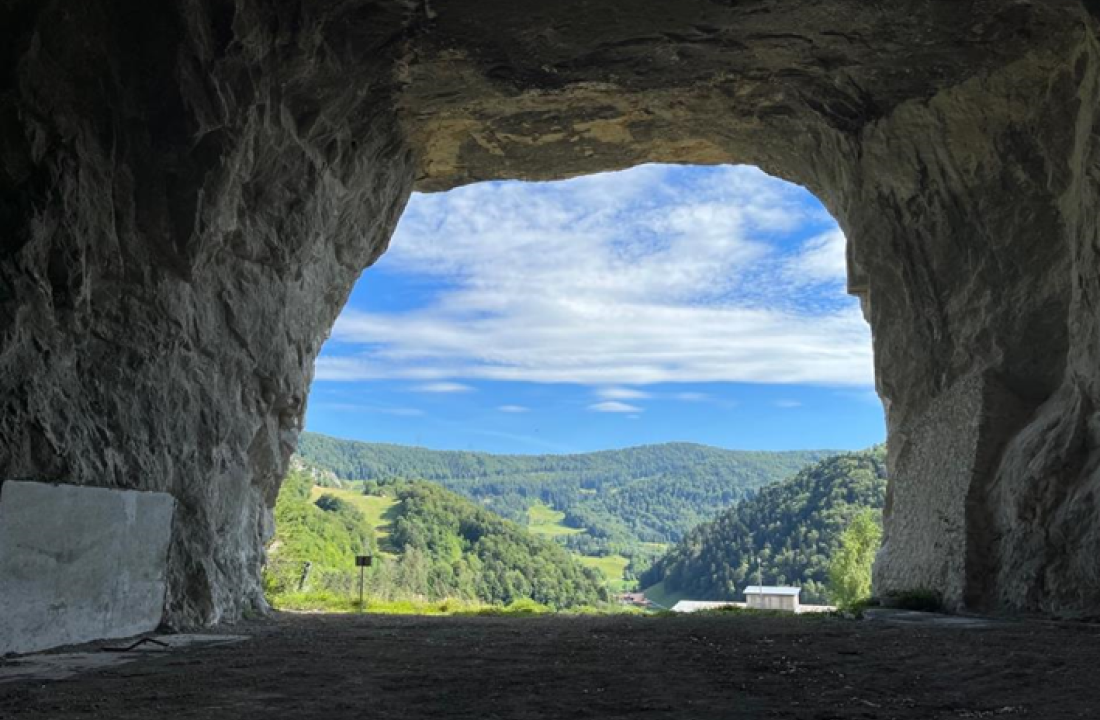Lime factory
The former galleries
The mine with the two large front halls, still open today, is characterised by its location and its exceptional beauty:
- The ownership of the mine (commune of Clos du Doubs) and of the access roads (canton as owner of the parcels of the former lime factory of St. Ursanne) is secured for the long term,
- The galleries, backfilled with clean excavation material, offer generous possibilities for the creation of additional space,
- The site has been successfully rehabilitated and the majority of it has been backfilled,
- The site’s past, which is associated with one of the largest special waste scandals in Switzerland, plays a special role in the history of waste management in Switzerland. The cleanup at Bonfol is also directly attributable to the events at St-Ursanne. The site sends out a positive message.

©Gauthier CorbatThe lime factory

The book by Marcos Buser and Nicolas Paupe tells the story of the discovery of the lime and its exploitation, the cessation of underground mining, the storage of industrial waste, and the cultural activities that developed after the rehabilitation of the site.
The industrial waste stored in the underground galleries after the cessation of mining operations in the 1990s, the transformation of the mine into a hazardous waste dump, and the bankruptcy of the company in charge of disposing of this waste triggered a wave of concern in Switzerland in the 1990s. The fight against the construction of the waste dump, as well as later for the rehabilitation of the site, was exemplary and triggered new projects in the field of waste management.
This exciting history enriches the site, enhan¬ces it and keeps it alive to share with visitors.
In the Pearl of the Jura
The small town of Saint-Ursanne, also known as the «Pearl of the Jura», has remarkable historic buildings, including the collegiate church and cloister dating from the 12th and 13th centuries. Numerous art galleries and antique stores line the streets of the town, and in a mediaeval garden you can discover the medicinal and vegetable plants used in the past. An ideal base for numerous outdoor excursions, the region offers activities as diverse as hiking, biking, canoeing, fishing and paragliding.
Most visitors to the Clos du Doubs are excursionists (75%) and «short-term» tourists (less than 3 nights). According to the local tourism office, the primary area for short-stay tourists is the Lake Geneva area, followed by the Zurich region. The three main types of customers are families, 40- to 65-year-old persons and 65-year-old retired persons or older.
The seasonality of visitor numbers are as follows: a high season in July and August, which is very touristy, two mid-seasons (Easter to June / September to October) and a low season from November to Easter.

©Reto Duriet